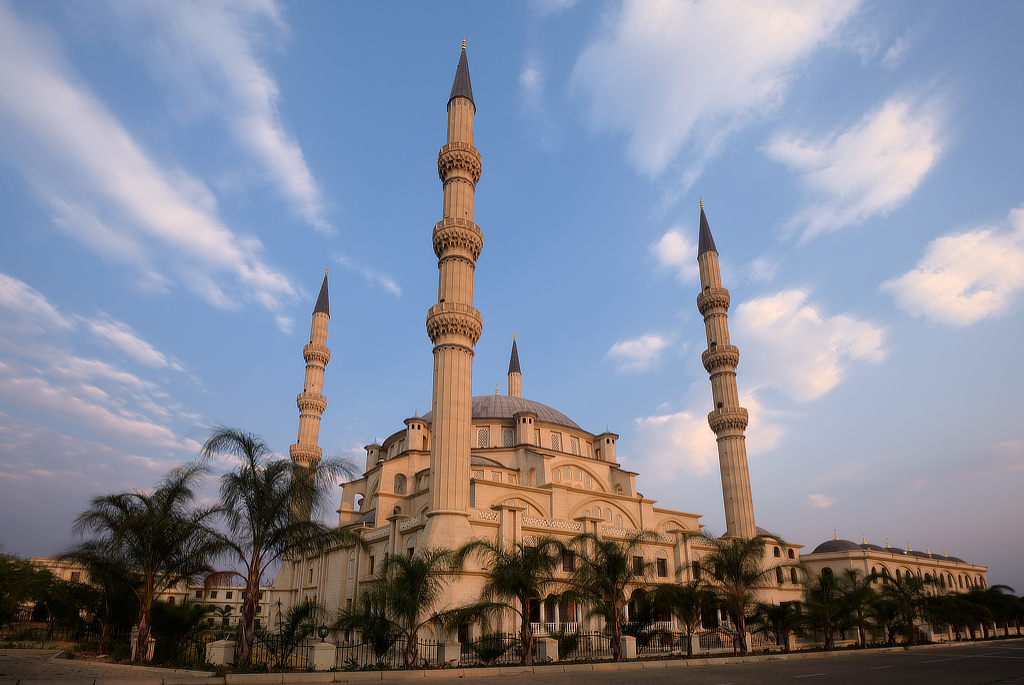On 23 October 2019 the Fujifilm X-Pro 3 was announced and in good Fujifilm tradition, there are several reasons why this new iteration of the X-Pro series surprises us!
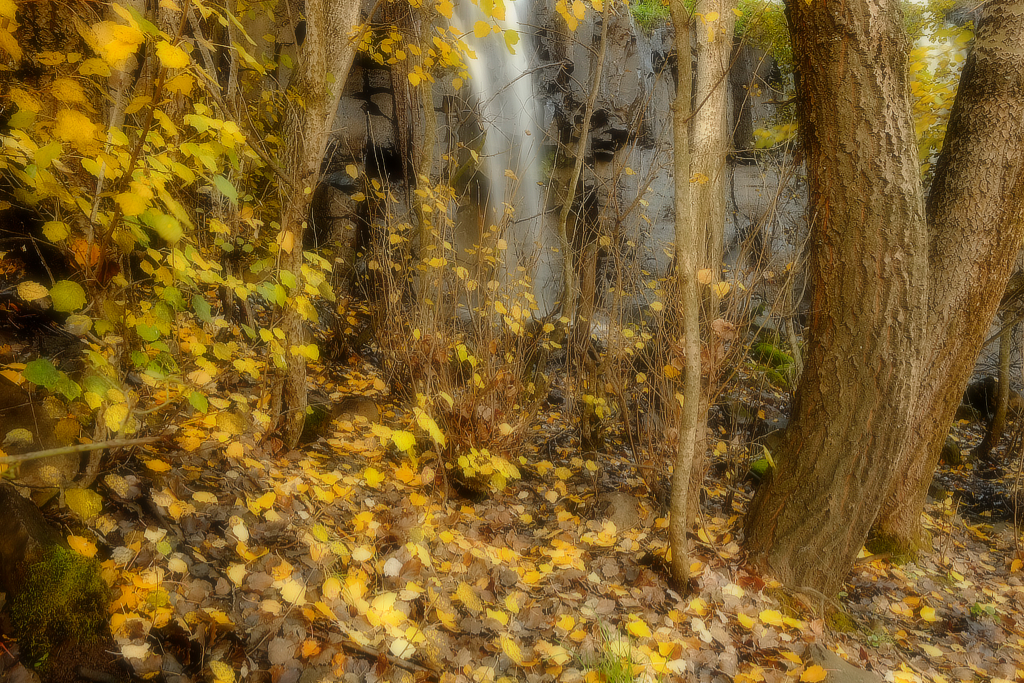 In-camera Orton Effect (see below how this is done).
In-camera Orton Effect (see below how this is done).
The talk of the town is the “hidden” implementation of the touch screen on the back of the camera. For the next couple of months, we will see many debates about this new direction for the X-Pro3. Already, I saw headings like “Purist Dream
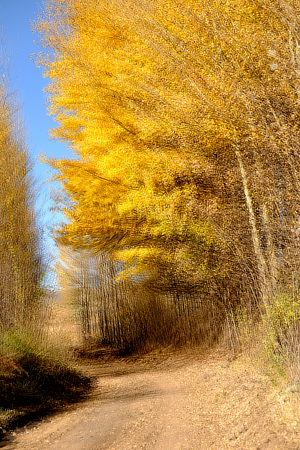 The Twist-Turn Effect
The Twist-Turn EffectFujifilm is one of the very few cameras that actually has a dedicated selection dial for multiple-exposures. But its implementation did not match the boldness of a special dial!
It only allowed for two photos to be blend together using the average exposure algorithm. That said, I did use it quite often, and most of the time with satisfactory results.
Well, this limitation is a thing of the past! The X-Pro3 now offers the blending of up to 9 photos with 4 different blend modes. Fujifilm is not the first to have this feature though. Back in the days I also used my Nikons to do multiple exposures, and Canon has a great implementation. Knowing this and then looking at the heading of this article, you may think that I am easily impressed, but this is not why I am a fan of Fujifilm.
I haven’t told you the story yet…
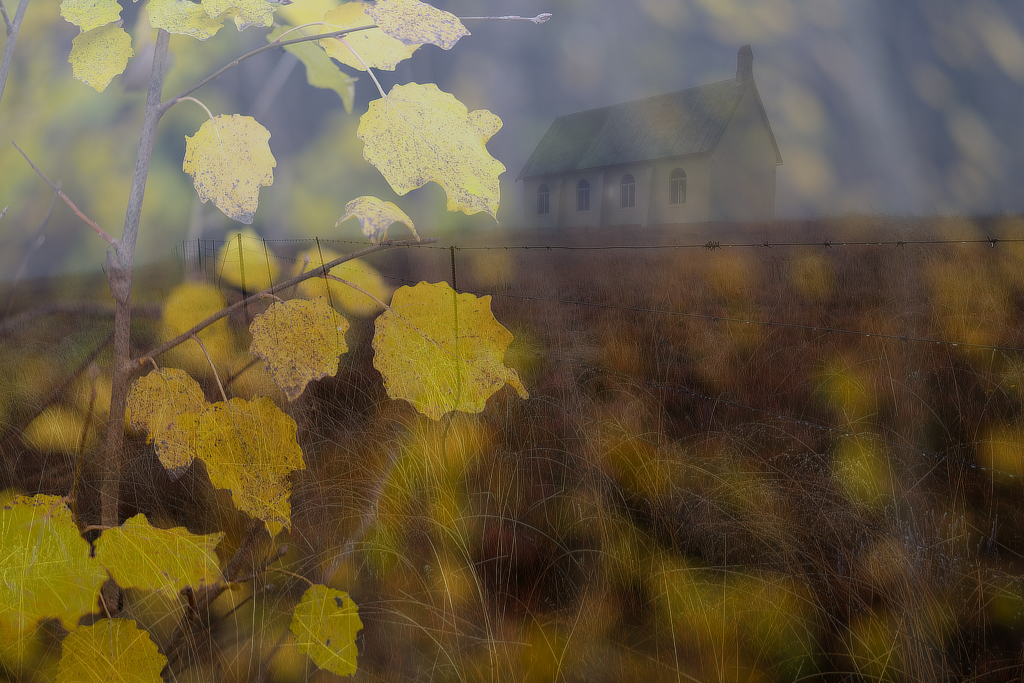 The Church in Autumn – In-camera multi exposure
The Church in Autumn – In-camera multi exposure
The story starts 10 months ago. As a Fujifilm X-Photographer, 10 months ago, I received an email from Fujifilm asking me to partake in an online survey for Fujifilm. I promptly did so and then get an idea; While I have the attention of one of the “insiders” in Fujifilm, let me ask this burning question about the implementation of multiple exposures …
Here is the letter I sent:
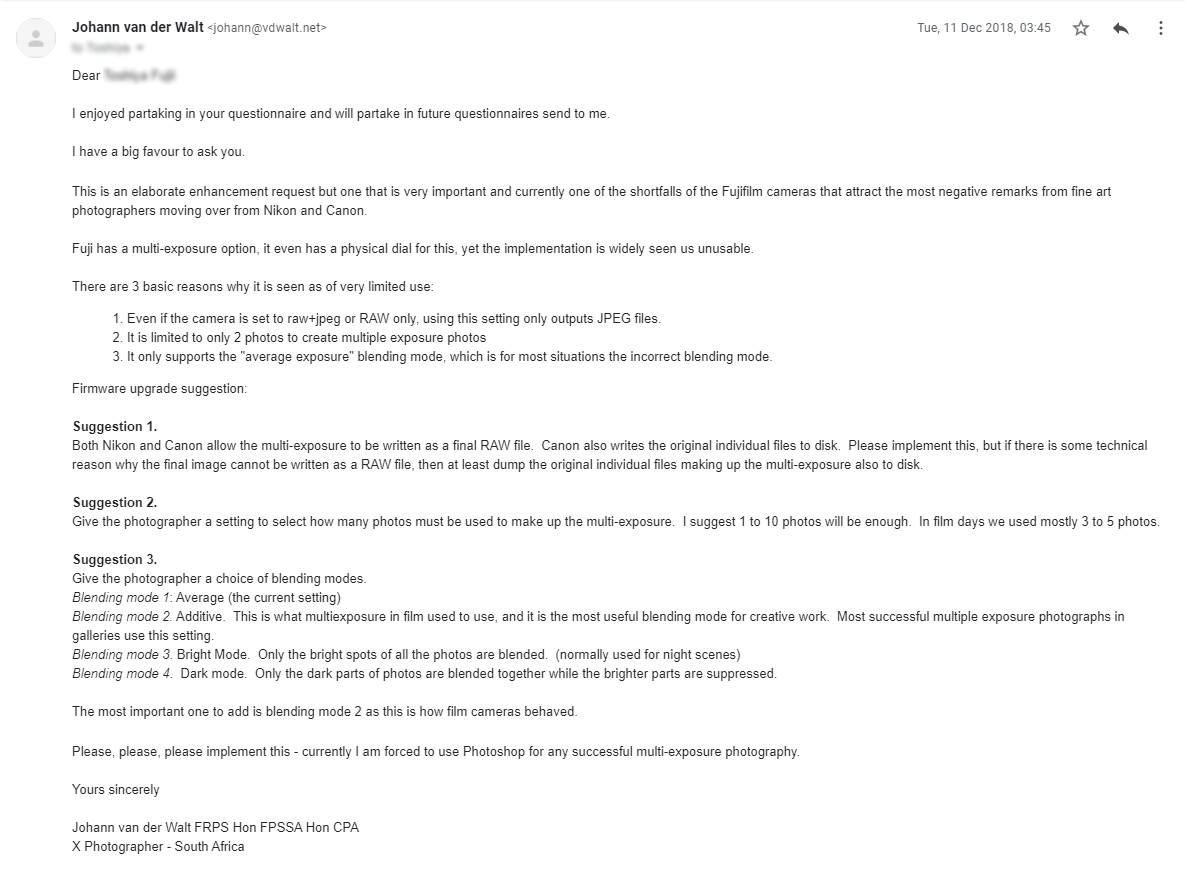
Yes, I know I did exaggerate a bit in this email. I actually use the two-photo multiple exposures quite often, and I know of many people with amazing results. And on top of this, the Nikon and Canon implementations are kept as a "special" feature on their high-end cameras, while the Fujifilm implementation is in ALL their cameras!
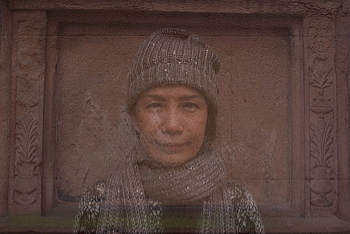 A frame looking for a photo
A frame looking for a photoI did receive an email back from my newly created “insider” contact stating that he passed my letter on to the R&D team.
Then, In February, like a good Fujifilm fan, I watched the 1 hour and 49-minute Fujifilm Summit held in Dubai on YouTube, and great was my surprise to see that they added this feature request to their life audience survey.
Here is a link to the part in the video where they show the audience the possible feature enhancements to choose from.
https://youtu.be/W7fHsSOGmVE?t=5492
Unfortunately, the audience did not rank this a high priority, so I did not think it will actually make it into a future body soon.
On 22 October I watched Ted Forbes first impression video of the X-Pro3, and about 5 minutes into the video, he mentioned the new Multiple Exposure option of the X-Pro3.
Here is the video at the moment he showed it in the setting menu:
https://youtu.be/s8UmMOpc_Xc?t=317
Now, that is why I am a fan of Fujifilm. They listen to their photographers, even when it is not necessarily a popular request, they still listen and do…
Technical details of the photos posted here
- In-camera Orton Effect This effect consists of two photos taken on a tripod (for accurate alignment). The first is taken sharp in focus, and the second is taken with the focus ring turned to blur the photo. I found that a little out of focus works better than totally out of focus.
- Twist-Turn Effect For this technique, I was hand-holding the camera. I took the first photo, then rotate the camera slightly and because the second photo is superimposed on top of the first one in the viewfinder, I could move the camera until I got the correct center point.
- The Church in Autumn I took the first photo of the church and then had to walk a couple of meters to the tree to take the second photo.
- A frame looking for a photo! When I saw this (most likely) faded mural on the outside of a church in Germany, I could not help but want to make multiple exposures. Xiaoyi was my model!
- Possibilities with this new implementation Very often, when travelling I do not have my neutral density filters with me. In the case when I want to capture movement, such as the movement of low hanging clouds, I take a series (usually 20) photos using the interval timer and then add them together in post-processing. The Mosque and Midrand (below) is an example of such a photo. For this article, I revisited this photo by opening 9 exposures in a stack in Affinity Photo and change the blending mode of all 9 photos to average. While the 20 photos will give a better result, this is not a bad option to use during travelling when you want to blog on the go without having access to your post-processing workflow.
